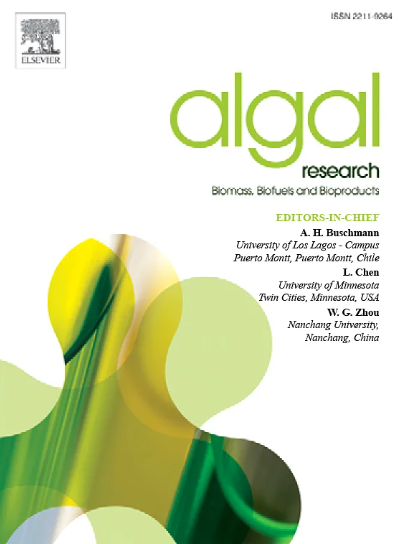Accurate non-invasive quantification of astaxanthin content using hyperspectral images and machine learning
IF 4.6
2区 生物学
Q1 BIOTECHNOLOGY & APPLIED MICROBIOLOGY
Algal Research-Biomass Biofuels and Bioproducts
Pub Date : 2025-02-25
DOI:10.1016/j.algal.2025.103979
引用次数: 0
Abstract
Commercial cultivation of Haematococcus pluvialis to produce natural astaxanthin has gained significant traction due to its application in feeds, cosmetics and nutraceuticals. However, monitoring of astaxanthin content in cultures remains challenging and requires invasive, time consuming and expensive approaches. Here, we employed reflectance hyperspectral imaging (HSI) of H. pluvialis suspensions within the visible spectrum, combined with a 1-dimensional convolutional neural network (CNN) to predict the astaxanthin content (μg mg−1) quantified by high-performance liquid chromatography (HPLC). This approach had low average prediction error (5.9 %) for samples cultured under the same conditions and was only unreliable at very low astaxanthin contents (<0.6 μg mg−1). In addition, our CNN model outperformed single or dual wavelength linear regression models even when the spectral data was obtained with a spectrophotometer coupled with an integrating sphere. Different cultivation conditions to the ones used for the training of the CNN model affected the reflectance spectra of H. pluvialis cultures, leading to higher prediction errors (32.9 %). Transfer learning, a partial re-training of the model, fine-tunned the CNN to the variability observed in the new samples leading to a lower average prediction error (8.2 %). Overall, this study proposes the use of HSI in combination with a CNN for precise non-invasive quantification of astaxanthin in cell suspensions. Optimal performance is achieved when the training dataset accurately reflects the inherent variability of the target samples to be quantified.

求助全文
约1分钟内获得全文
求助全文
来源期刊

Algal Research-Biomass Biofuels and Bioproducts
BIOTECHNOLOGY & APPLIED MICROBIOLOGY-
CiteScore
9.40
自引率
7.80%
发文量
332
期刊介绍:
Algal Research is an international phycology journal covering all areas of emerging technologies in algae biology, biomass production, cultivation, harvesting, extraction, bioproducts, biorefinery, engineering, and econometrics. Algae is defined to include cyanobacteria, microalgae, and protists and symbionts of interest in biotechnology. The journal publishes original research and reviews for the following scope: algal biology, including but not exclusive to: phylogeny, biodiversity, molecular traits, metabolic regulation, and genetic engineering, algal cultivation, e.g. phototrophic systems, heterotrophic systems, and mixotrophic systems, algal harvesting and extraction systems, biotechnology to convert algal biomass and components into biofuels and bioproducts, e.g., nutraceuticals, pharmaceuticals, animal feed, plastics, etc. algal products and their economic assessment
 求助内容:
求助内容: 应助结果提醒方式:
应助结果提醒方式:


